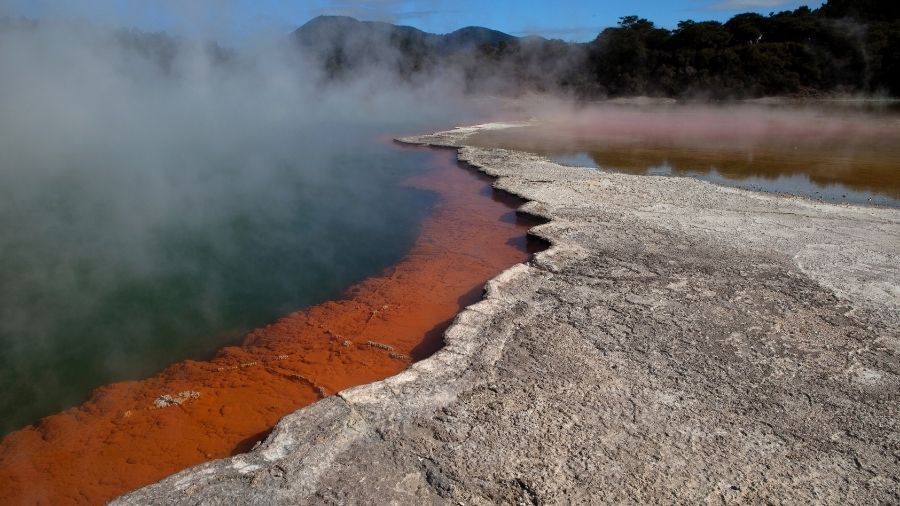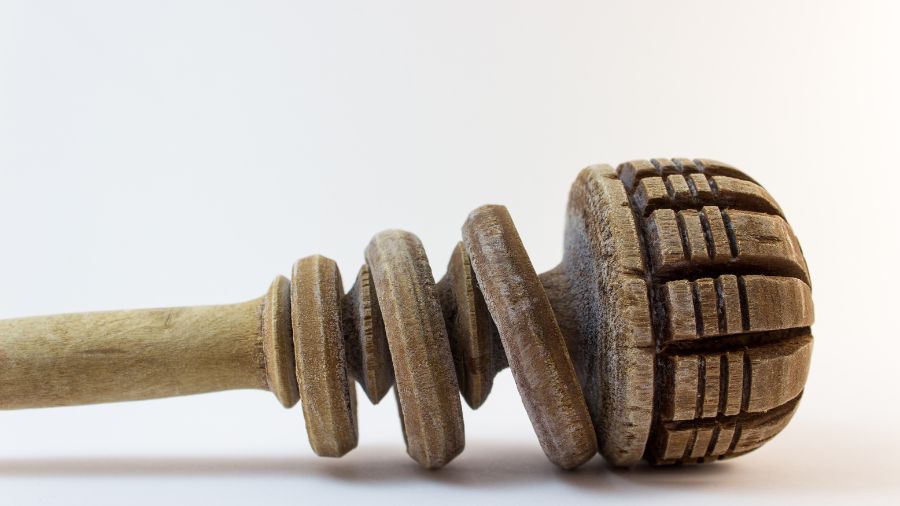Deadliest Lakes in The World (Video)
1. Lake Kivu - Republic of Congo, Africa
If there is any type of volcanic activity, even the lightest of earthquakes can cause the lake to explode killing millions of people nearby. The explosions occur due to high levels of carbon dioxide and methane in the water.
2. Lake Nyos - Cameroon, Africa
Concentrated carbon dioxide took the lives of 1,746 people and animal livestock living in a nearby village. The gas travelled through the water in high concentrations killing people and animals on the spot. If the concentration remains under 15% it would cause a person to become briefly unconscious. This is one of the most dangerous volcanic lakes in the world.
3. Lake Natron - Tanzania, Africa

Red Water lake with an extremely high ph so high in alkalinity that it can calcify animals and humans into stone. It has the capabilities to burn skin and eyes. Despite its danger to most animals and birds, it happens to be a breeding ground for flamingos as they breed on the salty caustic water.
4. Lake Michigan - USA

This beautiful lake is wonderful to look at, but when you get in, it is known for its spontaneous currents that can carry people far from the shore.
5. Boiling Lake - Dominica
As the name suggests, this lake is boiling hot. The temperature of the water is 92°C. It's forbidden to swim in the lake as it can boil you alive. The lake is positioned in a volcano crater which is why the water is constantly heated.
6. Horeshoe Lake - California, USA
This lake is generally considered safe however there have been a few fatalities. It is located in the Mountains and is surrounded by high concentrations of carbon dioxide, a toxic cocktail of poison and hydrogen sulfide. Due to high level of carbon dioxide the lake destroyed many trees, and 3 individuals died in 2006 due to the exposure of the carbon dioxide in a cave nearby, there are approximately 100 acres of dead and dying trees around the area.
7. Frying pan lake - New Zealand
Frying pan lake is one of the world least inviting hot springs because it gets too hot. The lake is also known as the Devils Blowhole is located in New Zealand's Waimangu Volcanic Rift Valley. It's so hot that it stays between 45 to 55 degrees Celsius.
The lake measures over 38,000 square meters and is only 5.5 meters deep. Hydrogen sulphide and carbon dioxide are emitted from the lake making it dangerous. In 1886, the explosion that came from the crater was known as the Mount Tarawera eruption, claimed the lives of over 100 people. Therefore, it has a tragic human past.
8. Laguna Caliente - Costa Rica
Laguna Caliente is one of the world's most natural acidic lakes that's located in Costa Rica. The temperatures ranges from 71 to 200 degrees Fahrenheit, the colour of the water changes from emerald green to grey and yellow. The yellow colour comes from the liquid sulfur floating in the air. As a result of the high quantities of acid and repeated explosions, acid rain and fog can occur, wreaking havoc on the flora around the Lake.
9. Karachey lake - Russia
Karachay Lake is one of the most polluted lakes in the world. Don't be fooled by its deep blue water, as it is toxic and deadly. Between 1934 and 1957, the soviet union used the lake as a nuclear waste dump for 12 years. According to sources, high levels of radioactive waste is said to cover nearly the whole lake, down to a depth of 3.4 meters. In some areas around the lake, radiation levels are high enough to kill a human in as little as 30 minutes.
10. Lake Monoun - Cameroon
Lake monoun is positioned in a volcanic crater in Cameroon, it is another dangerous African lake that erupted. In 1984 a limnic eruption at the lake occurred, resulting in the release of a significant amount of carbon dioxide and the deaths of 37 individuals. Lake Monoun is one of the only three lakes in the world with significant amounts of gas absorbed and repressed deep beneath the lake's water surface, creating the ideal conditions for a liminic eruption.
The lake is deadly because it causes asphyxiation (a deprivation of oxygen causing nearby people to suffocate.) When dissolved CO2 erupts from deep lake waters, creating a gas cloud that can suffocate wildlife, cattle, and humans. A tsunami could develop from a liminic eruption because rising CO2 displaces the water.
11. Lake Ontario - North America

Lake Ontario, the smallest but most treacherous of the Great Lakes, is a deadly mix of natural hazards and human-induced challenges. As the final basin in the Great Lakes chain, it accumulates upstream pollutants, including industrial waste and agricultural runoff, leading to toxic algal blooms and contamination of fish with PCBs and mercury. Its depth of 802 feet of cold-water currents that endanger swimmers and boaters, while its thermal contrasts fuel severe lake-effect snowstorms and hazardous fog.
Shoreline erosion and fluctuating water levels threaten infrastructure and biodiversity, compounded by invasive species like zebra mussels that disrupt ecosystems. Though rarely fully frozen, shifting ice sheets pose risks to fishermen and vessels. These dangers, coupled with its violent storms and eutrophication, reveal Lake Ontario as a perilous yet vital resource, demanding urgent conservation and resilience efforts to safeguard its fragile ecosystem and surrounding communities.
12. Lake Eerie - North America
Lake Erie, the shallowest and warmest of the Great Lakes, is known for its hazardous conditions, including seiches that create sudden, towering waves, particularly in its 25 to 30-foot deep western basin. Pollution and nutrient runoff fuel harmful algal blooms, leading to low-oxygen "dead zones" that threaten aquatic life, while invasive species like zebra and quagga mussels disrupt the ecosystem.
Extreme weather, including violent storms and rapid winter freezes, adds danger for boaters and coastal communities. The lake’s short water retention time and climate change exacerbate these issues, with warmer temperatures and thinner ice affecting both ecology and human activity. Combined with historical industrial pollution, Lake Erie poses significant and ongoing environmental and safety challenges.
13. Lake Toba - Indonesia

The largest volcanic lake in the world, known for its massive supervolcanic eruption about 74,000 years ago that had global consequences. While not currently active, it poses a potential risk due to its volcanic nature.
14. Laguna Verde - Bolivia
A lake with toxic arsenic and high mineral content, which makes it extremely hazardous for wildlife and humans. The bright green color comes from the high levels of dissolved copper.
15. Lake Baikal - Russia
The world’s deepest and oldest freshwater lake, which, while not inherently dangerous, has been known for sudden, intense weather conditions and can be risky for divers and boaters. The lake also faces threats from pollution and potential methane release from the lakebed.
16. Lake Aral - Kazakhstan
While not known for immediate dangers like toxicity or eruptions, the drying of the Aral Sea has led to severe environmental and health issues, including respiratory illnesses from toxic dust and pollution that has been released as the lake recedes.
17. Lake Pontchartrain - USA

Known for its strong and unpredictable currents, it has had incidents involving dangerous water conditions, as well as pollution that poses a threat to water quality and safety.
18. Lake Victoria - Africa
The largest lake in Africa, known for its dangers due to sudden storms, large waves, and the prevalence of the parasitic disease schistosomiasis.
19. Lake Xolotlan - Nicaragua
Also known as Lake Cocibolca, this lake can be risky due to volcanic activity in the region, particularly the nearby Masaya Volcano which poses a hazard for surrounding waters.
20. Lake Vostok - Antarctica
This subglacial lake, buried under 2.5 miles of ice, is extremely dangerous due to its extreme isolation and the potential for containing unknown bacteria or pathogens that could pose a risk to ecosystems or humans if released.
Inspired by the power of nature?
Shop for natural percussion instruments that are perfect for bringing the calming sounds of the outdoors into your home.













